Introduction
Set in a plain three miles long by a mile deep, Guttenberg is a rare Mississippi River town: there are no railroad tracks running along its riverfront. Take a serene walking tour along the riverfront and check out the collection of sold, 19th-century stone buildings erected by solid, 19th-century German immigrants.
Visitor Information
Guttenberg Development and Tourism maintains a visitor information center that is conveniently located along the riverfront (323 S. River Park Dr.; 563.252.2323). Even when the center is not staffed, the porch is open 24/7 and full of brochures.
History
Early French explorers called this area Prairie la Porte, which basically means door to the prairie, because the interior prairies were easily reached up the valleys; the name stuck for a while. For the Sauk and Mesquakie, this plain was a favorite summer hangout. European settlers trickled into the area in the late 1830s. By 1838 Clayton County had been established, so a sheriff was hired and based at Prairie La Porte, with the Graybill Tavern serving as temporary courthouse. In those early years, Clayton County was the administrative center for an area that now includes most of the Dakotas, all of Minnesota, and about a quarter of Iowa. Of course, it had fewer residents then, but still, that’s a lot of territory! The town’s first survey was completed in 1839 and a courthouse was built in 1840. Prairie la Porte hit the big time with the opening of the post office in 1841. Alas, fate is a fickle mistress, and the county seat was moved out of town in 1843; the post office closed soon after that.
Surprisingly, the loss of the county seat and post office did not kill Prairie la Porte. Naham Dudley is credited with discovering the first lead deposits in the area, and the mining industry took off. Around 1843, the Western Settlement Society of Cincinnati, a group founded to help Germans arriving in the US, purchased large tracts of land in Clayton County so they could build a town they wanted to call Gutenberg. The first families arrived on March 8, 1845 and found little more than the abandoned Graybill Tavern (Herman Graybill had died in 1843) and a neglected old county courthouse.
Germans continued to pour into town in the 1840s and in January 1847, the Iowa legislature approved a name change: Prairie la Porte became Gutenberg. The town’s founders chose to honor the famed 14th century German inventor of movable type, Johannes Gutenberg. The first appearances of the town’s name in print were spelled the same as the inventor’s surname, but an 1848 plat by G.A. Mengel Lithographing Company of Cincinnati spelled the name with a double “t” and the spelling stuck. (In 1949, Guttenberg residents voted down a measure to restore the original spelling by dropping the extra ‘t’ in its name.)
The Germans who arrived were generally well-educated folks. They chose street names that honored both their native German culture, as well as that of their new American homeland. To the south, streets were named after German cultural figures Christoph Wieland, Johann Herder, and Johann Goethe. To the north, streets bore the names of musicians Haydn and Mozart, plus early American heroes George Washington, Thomas Jefferson, and two of the foreign officers who fought with the Americans in the Revolutionary War: the Marquis de LaFayette and Tadeusz Kosciusko.
Guttenberg grew up in 1851 when it incorporated; it counted about 1,000 residents at that time. In the next decade, the town experienced steady growth that triggered a building boom; many of those structures were built of native limestone from the nearby bluffs and are still around.
Ferry service was initiated to Glen Haven (Wisconsin) in 1855, and several hotels and breweries opened. In 1856, Guttenberg won an election and again became the county seat, but this status would prove fleeting, too: Elkader won the 1859 election and has had the county seat since. (In a 30-year period, citizens of Clayton County voted for a county seat 11 times, moving the county seat from Garnavillo to Guttenberg to Elkader.)
After the Civil War, fewer immigrants arrived and the town’s population stabilized. Guttenberg became a railroad town in 1871, just as the farm economy assumed a more central role in the town’s fortunes and as a pearl button factory grew into the town’s single largest employer. In 1905, the Army Corps of Engineers shifted the main channel from the Glen Haven side to the Guttenberg side, much to the dismay of Glen Haven.
Guttenberg’s residents were not fond of attempts to ban sales and consumption of alcohol. When Iowa voted on Prohibition in 1880, Guttenberg residents were strongly opposed (78% voted no in Clayton County vs. 55% yes statewide); it should be no surprise that the town had five breweries and two distilleries at that time. Although the law was thrown out on a technicality, it was adopted again in 1884. Local breweries cut back production but managed to stay in business. In spite of Iowa Prohibition, Guttenberg had seven licensed saloons in 1891, with six more added the following year. Guttenberg even managed to keep its three wholesale beer distributors operating by giving them peddler’s licenses. In the fine tradition of towns up and down the river, Guttenberg relied on saloons for much of their revenue, and they weren’t about to let a little thing like state law get in their way.
Alas, Guttenberg couldn’t fight Big Brother forever. A new law in 1910 restricted the number of taverns to one per thousand people, causing five of Guttenberg’s six taverns to close. A proposed constitutional amendment in Iowa to ban the manufacture and sale of intoxicating beverages fell just short of a majority in a 1917 election, but residents around Guttenberg again said a resounding “no,” rejecting the amendment 510 to 26! By the time the US officially adopted Prohibition in 1918, Guttenberg residents had valuable experience in the art of home-brewing, giving them a head start in the bootlegging business. Congress ratified the 21st Amendment in February 1933 to end Prohibition but it did not become law until Utah ratified the Amendment in December. True to its roots, Guttenberg issued its first post-Prohibition liquor licenses in April, nearly eight months before Prohibition was officially over.
In 1937, Guttenberg threw itself a big party to celebrate the centennial of its founding and the completion of Lock and Dam #10. One ceremony was called Mingling of the Waters. It involved mixing water from the Gulf of Mexico with water from the headwaters of the Mississippi River. The mayors of New Orleans and Bena (Minnesota) were asked to contribute samples from their respective ends of the river. New Orleans sent its water in a glass decanter that had been owned for 100 years by an old-time New Orleans family; they spent $7.69 to ship the package by airmail. Bena sent its water in a beer can; they spent eight cents on postage.
Exploring the Area
The Lockmaster’s House (at Lock & Dam #10; 563.252.1531) is partly a local history museum and partly a time capsule preserving snapshots of daily life from 1938, the year the house was built for the lockmasters and their assistants. This is the last remaining lockmaster’s house on the Upper Mississippi.
The Upper Mississippi River Fish Hatchery (331 S. River Park Dr.; 563.252.1156) has a few small aquariums displaying fish species native to the Mississippi River and Iowa streams. Stop in here for a few minutes while you are walking along the riverfront.
The viewing area for Lock and Dam #10 (563.252.1261) is a fenced-in area next to the lock accessed at the foot of Prince Street. Bald eagles are usually easy to spot in the winter here just below the dam.
In most places, a copy of an original is not a major attraction, but the Facsimile Gutenberg Bible in Guttenberg is not your typical copy (Guttenberg Public Library, 603 S. 2nd St.; 563.252.3108). This copy is one of about 300 printed in 1913 in Leipzig; it was on display in Mainz, Germany in 1942 when the city was bombed. Charles Millham, the former publisher/editor of the Guttenberg Press, purchased the book after WWII and loaned it to the library to display. The book is protected in a glass case with one set of pages open to view the exceptional craftsmanship. The library also has a bust of the town’s namesake, Johannes Gutenberg.
St. Mary’s Catholic Church (518 S. 2nd St.; 563.252.1247) traces its roots in Guttenberg to 1851. The Reverend Joseph Brinkman arrived in 1889 and reshaped the parish with a new school and parsonage. Reverend Brinkman designed those buildings, as well as the new church that was dedicated in 1904—a magnificent Gothic Revival building that is the third building for the parish. This church was to be built of native sandstone but it proved impractical, so they used brick manufactured in St. Louis. The size of the church may surprise you: it is 152 feet deep, 62 feet wide, and 74 feet across the transept, with towers that reach 146 feet high; it can seat 800.
Culture & Arts
Guttenberg may be a small town, but it has an active arts scene. Check out the mural of the Delta Queen Steamboat at Esser’s Clothing Store (502 S. River Park Dr.).
In 1934, Rudolph Wolter built a memorial for the Native Americans who once lived in the area. The stone memorial houses a few odd items chosen by Mr. Wolter (some look like dime-store figurines); no one seems to know much else about this unusual monument.
The Guttenberg Gallery & Creativity Center (214 S. River Park Dr.; 563.252.2787) is located in a historic building that dates to the 1850s. The center has a gallery that showcases (and sells) the works of local and regional artists and sponsors classes and events like Art by the River (June).
Sports & Recreation
Big Springs Nature Area (County Highway X56; 563.252.1161) is an 11-acre park tucked into a ravine with waterfalls, spots for picnicking, and a hiking trail.
At the south boat ramp, there is a short trail with good bird viewing, the Upper Mississippi Bottomland Forest Interpretive Trail. The trail starts at the south end of the south boat ramp, by the “Public Use Regulations” sign.
Parks Along the River
Just north of town, Frenchtown Park (Frenchtown Rd.; 563.245.1516), contrary to what you might think, did not receive its name because it is a great spot for a certain type of tongue-fueled intimacy, even though it is. The park has scenic views of the Mississippi backwaters and has been deserted every time I have visited, even on weekend afternoons in the summer.
The riverfront is a series of nicely landscaped areas with paved walking paths and benches, generally called Ingleside Park.
Getting on the River
If want to get on the river but don’t have a boat, The Landing (703 S. River Park Dr.; 563.252.1717) operates a fishing barge.
Entertainment and Events
The Lakeside Ballroom (1202 N. 4th St.; 563.252.1355) has been a focal point for regional entertainment since 1927, hosting an impressive range of famous musicians from the Everly Brothers to Johnny Cash. Check the website for a list of upcoming events.
Umbrella Arts sponsors Friday evening concerts from June through the middle of August (6p-8p) and a community sculpture competition.
Farmers Market
Guttenberg has a farmers’ market along the riverfront on Saturday mornings from late May through September.
Festivals
The city honors its river history in August with Celebrate Guttenberg and the River (2nd Saturday), with live music, food, and arts.
German Fest (563.252.2323; September) is the biggest party in town, when residents celebrate their German heritage with food, music, and more food.
**Guttenberg is covered in Road Tripping Along the Great River Road, Vol. 1. Click the link above for more. Disclosure: This website may be compensated for linking to other sites or for sales of products we link to.
Where to Eat and Drink
Enjoy a pint of locally brewed beer at the Guttenberg Brewing Company (530 S. 1st St.; 563.252.2739) or relax with a drink and your friends in the limestone-walled cellar tavern at The Rathskeller (218 S. River Park Dr.; 608.632.4806; open weekends).
Joe’s Pizza (608 S. River Park Dr.; 563.252.2376) serves a good pizza in a range of sizes (8″ to 14″) and toppings. And, if you still have room, grab some gourmet ice cream.
If you want another dining option while you’re in the Guttenberg area, consider taking a 25-minute drive to Elkader, Iowa, a small town named for Abd el-Kader, an Algerian who led a 19th-century resistance movement against the occupying French forces. Fittingly enough, Elkader has an Algerian restaurant: Schera’s Restaurant and Bar (107 S. Main; 563.245.1992) where the food is delicious, affordable, and they even have burgers, in case you are traveling with someone less adventurous than yourself. You could make a meal by sampling items on the appetizer menu.
Where to Sleep
Camping
Most of the campgrounds near Guttenberg are filled by seasonal campers; the campgrounds listed below usually have a few sites available for overnighters, although the number varies from season to season. If you have trouble finding a site at one of these places, there are more options between Guttenberg and McGregor.
Primitive camping is allowed in Frenchtown Park (Frenchtown Rd.; 563.245.1516) just north of town; the park is usually quiet, except for the occasional group of bikers that rumbles through the area a few times a year.
Great River Road RV Campground (601 Koskiusko St.; 563.920.1725) offers full hook-ups for overnight camping (or longer) in an open area near the marina.
Lakeside Campground (503 Koskiusko St.; 563.252.4151) also has a handful of overnight sites on a crowded lot on the north end of town.
Miner’s Creek Campground (1304 Miner’s Creek Hideaway; 563.252.2811), just outside of town, has full hookups for RVs, plus several campsites for tents and primitive camping.
Budget
The Guttenberg Motel (927 S. Highway 52; 563.252.1433) is a small place on the highway (12 rooms) that was recently freshened up.
The Eagle View Motel (115 Acre St.; 563.252.1653; Internet hookup) is a bargain with a million-dollar view; the ten rooms are clean and well-maintained and many have spectacular river views.
Rosemary’s Bed and Bath (518 S. River Park Dr.; 563.880.5469) offers four updated, affordable rooms along the main drag. They only accept cash or checks.
Cabins/Houses
Guttenberg RV Park (310 DeKalb St.; 563.252.3330) has a rental loft with room to sleep five in an old limestone building.
Miner’s Creek Campground (1304 Miner’s Creek Hideaway; 563.252.2811) rents a couple of modern cabins that can accommodate a small family.
Moderate and Up
The Landing (703 S. River Park Dr.; 563.252.1615) has 19 rooms, including nine suites in an 1858-era limestone building on the riverfront; rooms are clean and modern.
Resources
The local newspaper is the weekly Guttenberg Press (563.252.2421).
Post Office: 519 S. First St.; 563.252.1517.
Guttenberg Public Library: 603 S. 2nd St.; 563.252.3108.
Community-supported writing
If you like the content at the Mississippi Valley Traveler, please consider showing your support by making a one-time contribution or by subscribing through Patreon. Book sales don’t fully cover my costs, and I don’t have deep corporate pockets bankrolling my work. I’m a freelance writer bringing you stories about life along the Mississippi River. I need your help to keep this going. Every dollar you contribute makes it possible for me to continue sharing stories about America’s Greatest River!
Guttenberg Photographs
©Dean Klinkenberg, 2024, 2021, 2018,2013,2011
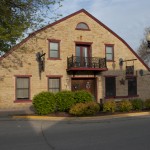

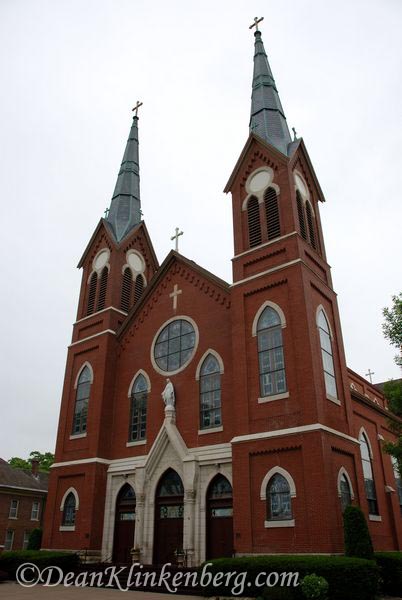
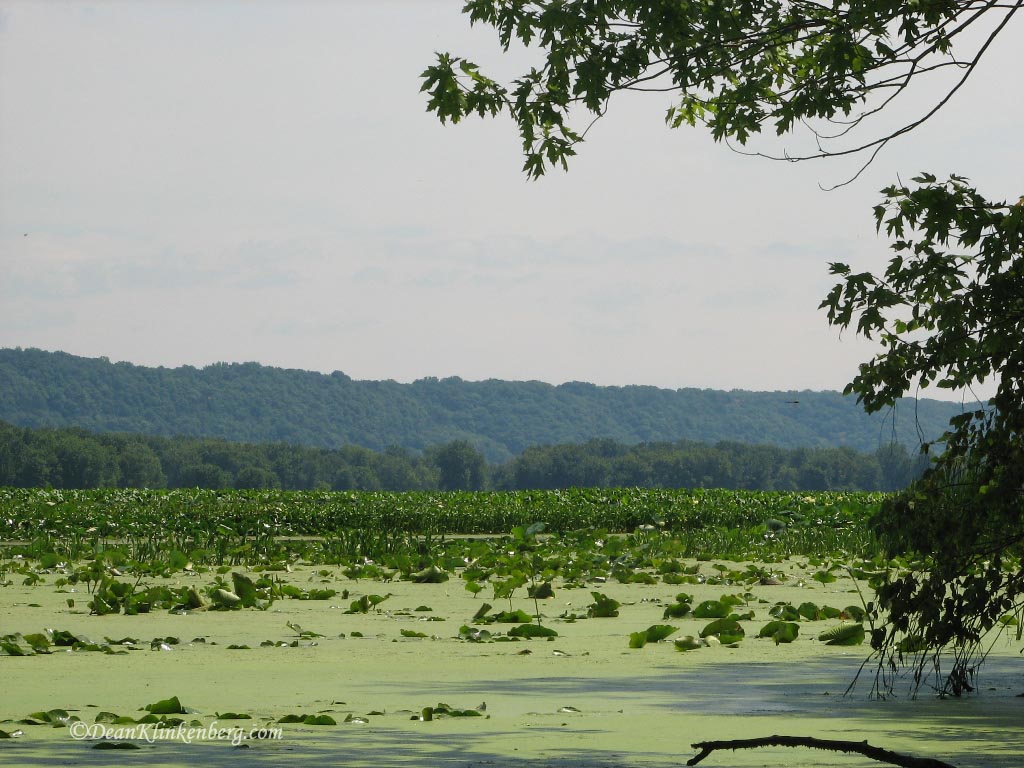
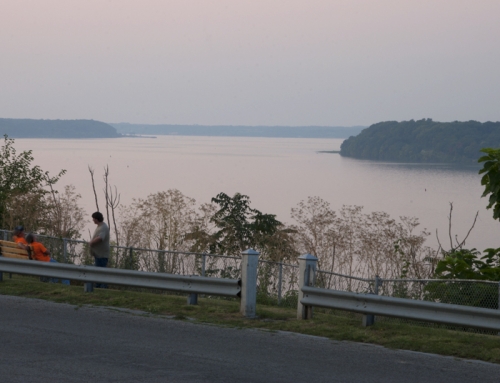
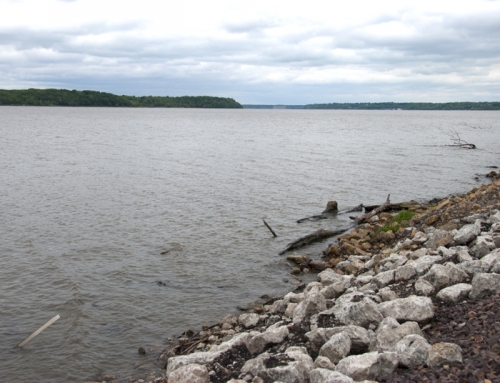
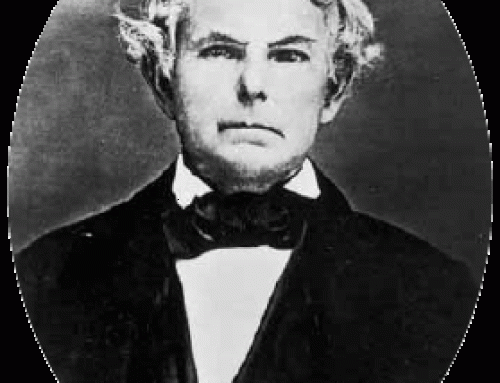
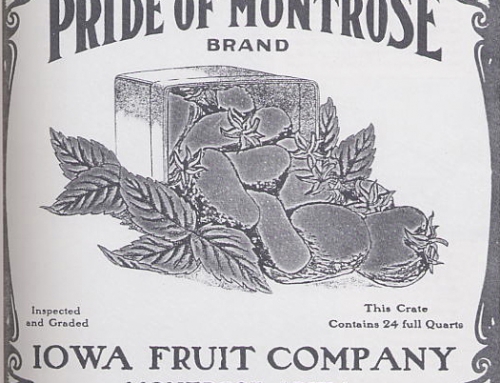
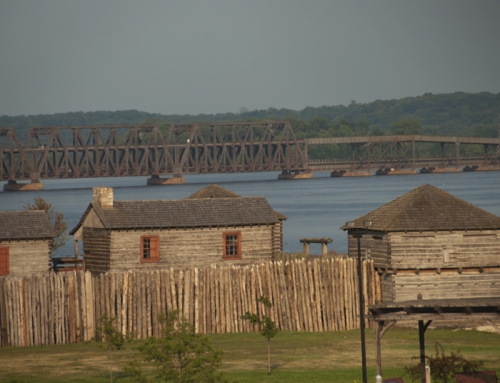
Much of this information is out of date. Is this already published? If not, let’s update it.
My mother, Cecelia Spielbauer Steger, grew up in this town and we love to visit in the summer when we can My family boated on the Mississippi River almost every Sunday in the summer when I was was growing up and we try to make it back for a summer weekend camping trip on a sandbar south of the dam. The stretch of the Mississippi between Guttenberg and Cassville, WI has some of the best boating around. This small-town Iowa gem is beautiful and well kept. Doug’s Steakhouse is great! I have many wonderful memories from here…Thanks so much for sharing the history!
Thanks for sharing your memories, Misty! I hope you get a chance to visit Guttenberg again. It’s still a special place.
Hello ,My name is Misty Spielbauer,Tomas Micheal Spielbauer is my Dad.I LOVE THIS LITTLE TOWN. As child I ,we would come from Amarillo ,Texas and stay two or three weeks .I still remember the smell .Makes me think of the old water hole we would swim in .No pool back then . The old county store at we would get ice cream at.The man that ran it made the ice cream and chesse we took home to Texas.I think we also would made the weelly paper to let everyone know we were come to town …. L.O.L. Thanks. For the walk down memmory lain.I never felt like an out cast ,the friendly people you would ever want to know!